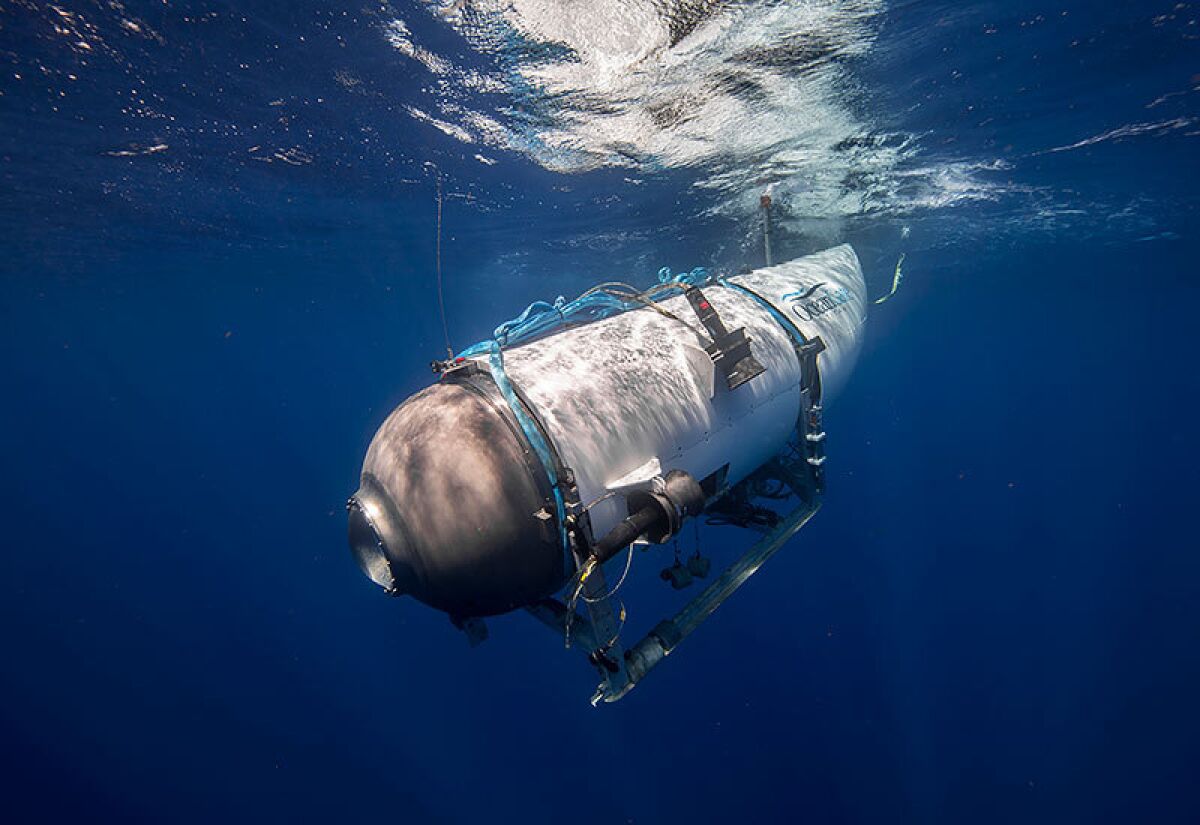5 aboard Titanic tourist submersible are dead after ‘catastrophic implosion’
The five passengers aboard the submersible that vanished on a trip to explore the Titanic in the Atlantic have died after a catastrophic implosion, the U.S. Coast Guard said Thursday.
“I offer my deepest condolences to the families. I can only imagine what this has been like for them,” Coast Guard Rear Adm. John W. Mauger said at a news conference. “I hope that this discovery provides some solace during this difficult time.”
Underwater robots from the vessel Horizon Arctic discovered the tail cone of the 21-foot Titan on the ocean floor, approximately 1,600 feet from the bow of the Titanic, Mauger said. The remotely operated vehicle found additional debris from the Titan, he said.
Paul Hankins, a salvage expert for the U.S. Navy, said five major pieces of debris were found, including the nose cone, which was outside of the pressure hull. A large debris field contained the front end bell of the pressure hull, the “first indication of a catastrophic event,” he said. A second debris field contained the back end of the pressure hull, Hankins said.
OceanGate Expeditions, which owns and operated the submersible, said that all five lives “have sadly been lost.”
The debris found Thursday was from the submersible, OceanGate confirmed in a statement.
“These men were true explorers who shared a distinct spirit of adventure, and a deep passion for exploring and protecting the world’s oceans,” the statement read. “Our hearts are with these five souls and every member of their families during this tragic time. We grieve the loss of life and joy they brought to everyone they knew.”
The five people aboard were Stockton Rush, an OceanGate co-founder who was serving as the expedition’s pilot; Hamish Harding, chairman of Action Aviation, a Dubai-based aircraft dealer; Paul-Henry Nargeolet, a veteran and accomplished diver with more than 30 trips to the wreck site; and Pakistani businessman Shahzada Dawood and son Suleman. Harding and Nargeolet were members of the Explorers Club, according to the professional society.

“This is an extremely sad time for our dedicated employees who are exhausted and grieving deeply over this loss,” OceanGate said. “The entire OceanGate family is deeply grateful for the countless men and women from multiple organizations of the international community who expedited wide-ranging resources and have worked so very hard on this mission. We appreciate their commitment to finding these five explorers, and their days and nights of tireless work in support of our crew and their families.
“This is a very sad time for the entire explorer community, and for each of the family members of those lost at sea. We respectfully ask that the privacy of these families be respected during this most painful time.”

The statement from OceanGate came after the Coast Guard said a debris field was discovered by a remotely operated vehicle near the Titanic.
Officials said the sub was located away from the Titanic wreckage on a smooth seabed floor. The size of the debris field and the vessel’s last known location are consistent with “an implosion in the water column.” It is unclear when it might have imploded, Mauger said.
He said officials were working on developing a timeline of the implosion.
The underwater noises that were first detected Tuesday and became the focus of search efforts over the last 48 hours do not appear to be connected to the sub’s implosion, Mauger said, adding that such a “broadband noise” would have been picked up by the sonobuoys.
It appeared highly unlikely that the victims’ bodies would be recovered, in part because of the harsh environment at the seafloor and because of the apparent implosion.













